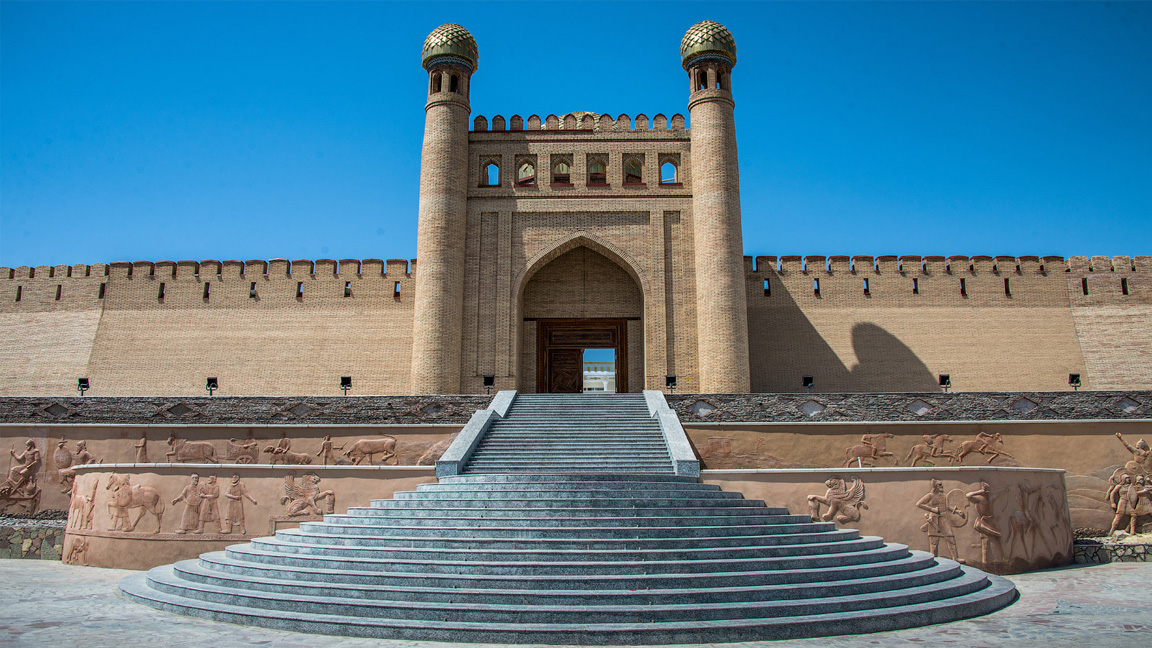


Istaravshan is one of the ancient cities of Central Asia and was formed more than 2500 years ago. The city is located at an altitude of about 1000 m above sea level on the Aksu mountain river on the west side of the Turkestan mountain range. It is believed that Ura-Tyube was founded by the Persian King Kir. The city became an extreme point of its great northeastern state. According to the Greek sources, it was 329 BC. this city called Kiropol was conquered by Alexander the great. But according to the communications of Sultan Baber, the city was the capital of the Utrusana land and had the same name.
As Ura-Tybe (“ura” hole, “tepe” hill) it has only been known since the 15th century. (after an Uzbek invasion). And on November 10, 2000, the government of Tajikistan decided to give the city back its historical name Istaravshan (translated from Persian “istaravshan” means bright star). A legend about the origin of the city tells that Istaravshan, which is located on a high rock, was the guiding star for numerous caravans on the Great Silk Road. Ura-Tyube is an original open-air museum. Currently, more than 150 historical, cultural and artistic monuments are represented on its territory and in the suburbs. These are:
Ak-Tepa Fire Temple (4-7th century BC). The ancient building consists of a central room, which is surrounded on all sides by corridors and reinforced by four corner towers.
Nur-Tepa town, Kok-gumbaz-mosque-madrasah (first half of the 16th), Sari-Mazar complex (16-19th centuries), wire-frame houses from the 18th to early 20th centuries with ornamental patterns are also of great historical importance Interest. To the north are the ruins of the Kimpirduval hill, which in ancient times protected the city from raids by nomads.
The city is also known for knife and musical instruments, "Karnay" painters, carvers, artists and "Syuzane" stickers. Handicrafts (fabrics, shoes, knives decorated with carvings, crockery and decorative handicrafts) have always had a high priority in Central Asia.
Istaravshan is a museum city, the old trade and handicraft center, one of the oldest cities in Central Asia. In 2002 Istaravshan was 2,500 years old.
The city was founded in the 6th century BC. Founded. by an Akhemenid king Cyrus, who fortified the settlement with three wall lines and a citadel.
In the second to seventh centuries BC the ancient feeling Mugteppa was on the territory of Istaravshan. Mugteppa was the residence of the local aristocracy, who built numerous palaces there, which were characterized by original expressive architecture. Evidence of this was found in the settlements of Bundzhikat (Kala and Kakh-Kakh) and Chil’khudzhra, which had fortified structures with palaces and cult buildings adorned with paintings and carved panels. In Bundzhikat, for example, the archaeologists found the painting with the picture of a she-wolf feeding two babies - the symbol for the contacts between West and East.
On Mug Hill, where the local governor's residence was once, only the gate with a dome and pillars on the sides remains. During the years of Arab sovereignty, Istaravshan became a province of the Arab Caliphate. It was at this time that Islamic architectural structures in portal-dome design such as mosques, madrasahs, mausoleums, minarets, etc. appeared. The rapid development of Istaravshan is associated with the rule of the first ethnic Tajik Samanid dynasty (9th-10th centuries). In the 13th century the city was destroyed by the Mongols. The second period of Istaravshan's development began in the 14th century when the powerful Timurid Empire was established. Now the city is called Ura-Tube. In the 16th century Maverannakhr (together with Ura-Tube) lost its importance with the formation of a new Shejbanid state with the capital Bukhara. In the 18th century, Ura-Tube entered another phase of its development. It was then that the citadel and fortress walls were restored and strengthened, and new structures built to withstand the attacks of numerous nomadic tribes. In 1886 Ura-Tube became part of Russia. Today Istaravshan has a number of interesting historical and architectural monuments that testify to its illustrious historical past.